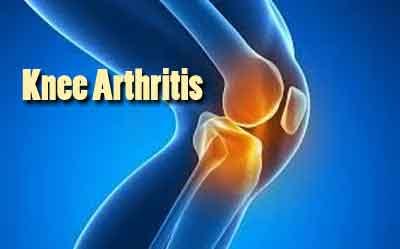- Home
- Editorial
- News
- Practice Guidelines
- Anesthesiology Guidelines
- Cancer Guidelines
- Cardiac Sciences Guidelines
- Critical Care Guidelines
- Dentistry Guidelines
- Dermatology Guidelines
- Diabetes and Endo Guidelines
- Diagnostics Guidelines
- ENT Guidelines
- Featured Practice Guidelines
- Gastroenterology Guidelines
- Geriatrics Guidelines
- Medicine Guidelines
- Nephrology Guidelines
- Neurosciences Guidelines
- Obs and Gynae Guidelines
- Ophthalmology Guidelines
- Orthopaedics Guidelines
- Paediatrics Guidelines
- Psychiatry Guidelines
- Pulmonology Guidelines
- Radiology Guidelines
- Surgery Guidelines
- Urology Guidelines
Daily walking cuts need for TKA over 5 years

A new study suggests that small changes in walking behavior could delay the need for total knee arthroplasty (TKA) in people with or at high risk of knee osteoarthritis.
Replacing time not walking with walking at moderate-to-vigorous intensity was associated with not more but less risk of TKA over five years, according to a study presented at the annual meeting of the American College of Rheumatology held in Chicago.
Read Also: Full-fat dairy cheese lowers risk of knee osteoarthritis, finds study
There is contradicting evidence whether walking more is associated with structural worsening and total knee arthroplasty (TKA). One reason for inconsistent findings is that walking can occur at different intensities. However, little is known about the association of walking intensity with the risk of TKA.
Hiral Master and associates conducted a study to examine the extent to which walking intensity is associated with the risk of TKA over five years in adults with or at high risk of knee OA.
The researchers used data from the Osteoarthritis Initiative to examine the extent to which walking intensity correlates with the risk for TKA among adults with or at high risk for knee OA. They assessed the effect of replacing time not walking with walking at very-light, light, or moderate-to-vigorous intensities on the risk for TKA over 5 years.
Read Also: Atorvastatin significantly lowers pain risk in knee osteoarthritis
The key study findings included are:
- Of the 1854 participants without TKA at baseline and who wore the accelerometer for ≥ 4 days ( age: 65.0 ± 9.1 years, BMI: 28.4 ± 4.8 kg/m2, 55% female), 108 (6%) participants received a TKA over five years.
- Replacing 5 minutes of non-walking time with 5 min of walking at moderate-to-vigorous intensity reduced the risk of TKA by 16%.
- There was no effect on very-light and light intensity.
- Similar results b were found for ROA and SxOA only samples
The authors suggested that clinicians should consider encouraging their patients with or at high risk of knee OA to go for a brisk walk for five to 10 continuous minutes each and every day.
For reference log on to https://acrabstracts.org/abstract/friend-or-foe-does-walking-at-higher-intensities-increase-or-decrease-the-risk-of-total-knee-arthroplasty-over-five-years/

Disclaimer: This site is primarily intended for healthcare professionals. Any content/information on this website does not replace the advice of medical and/or health professionals and should not be construed as medical/diagnostic advice/endorsement or prescription. Use of this site is subject to our terms of use, privacy policy, advertisement policy. © 2020 Minerva Medical Treatment Pvt Ltd